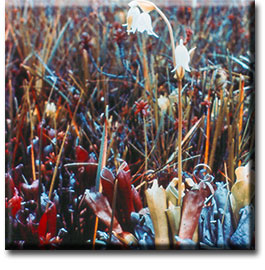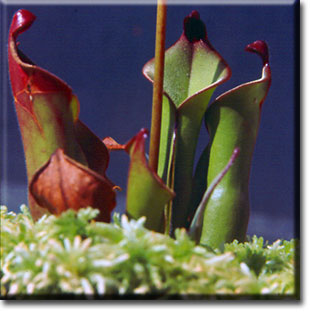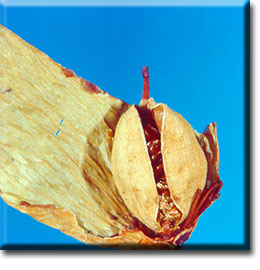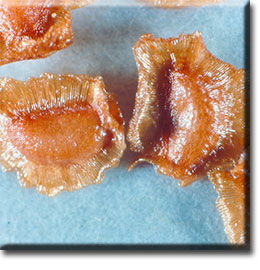HeliamphoraCarnivorous Plants / Insectivorous Plants
 TRAP TYPE: Pitfall Trap Heliamphora is one of three genera of the family Sarraceniaceae (the others are Darlingtonia and Sarracenia). One interesting fact about Heliamphora is the area where it grows: the flat-topped mountains (called "tepuis") of what is collectively called the Guiana Highlands. These mountains, which average about 2400 m tall, rise rather sharply to flat summit areas that are often cloud covered. Heliamphora can be found in wet, boggy areas of the tepuis. This picture shows Heliamphora minor on Chimanta-Tepui.  There are six species of Heliamphora on the tepuis. Five of the species, like H. minor (shown), tend to have short stems, but one, H. tatei, tends to climb or lean on other plants and reaches 4 m in height. According to DNA data, Heliamphora is most like the ancestor of the family Sarraceniaceae. The flowers are recurved, as in Darlingtonia and Sarracenia. Recurved flowers have been claimed to be an adaptation for keeping rain from collecting in flowers, and thus pollination could occur even during rainy periods. The leaves of Heliamphora are reportedly not very efficient at catching insects, judging from the quantity of insects found at the bottom of the tubular leaves ("pitchers"). The leaves of H. heterodoxa, shown here, show several distinct regions. The small hoodlike "spoon" at the tip of a leaf has nectar glands on its lower surface. The reddish color of the spoon may attract insects, and the hoodlike shape might prevent nectar from being washed away by rain--these are only guesses. The funnel-like zone of the leaf below the spoon tends to be reddish and therefore an insect might follow that color cue. The lower necklike part of the funnel has downwardly-pointing hairs that insure that an insect will continue to walk downward, since walking upward against these tiny spikes would be difficult. The lower part of the leaf, a little wider than the base of the funnel, contains water with a digestive enzyme, a pool from which an insect, once caught, rarely escapes. The leaf seems like a well-designed trap. If the number of insects caught is fewer than in leaves of Darlingtonia and Sarracenia, perhaps that reflects a relatively low insect density in the relatively high elevations of the tepuis.  The sepals of Heliamphora heterodoxa are easily seen and vary from green to red in color--the petals are small and can't be seen in this picture. The flowers tend to become upright as the fruits mature. The fruits of Heliamphora are dry when they mature, and split open at the sides to reveal numerous seeds--botanists call such fruits capsules. The seeds probably shake out through the slits in the capsule. A stronger wind would shake out more seeds, which would be advantageous in carrying a higher proportion of the seeds for longer distances. The seeds of Heliamphora, seen much magnified here, have wings on them. This suggests that they are dispersed by wind. The wings probably permit the seeds to be picked up by gusts of wind, once they have fallen to the ground. However, wings of this sort aren't efficient at dispersal for long distances in wind--a few seeds would be carried long distances in major storms, but in most weather conditions, many seeds would fall near the parent plant. This may be a good dispersal strategy, because the tepuis are like relatively small islands, so most of the habitats where Heliamphora could grow are very close to the existing plants. Heliamphora does not grow in the lowland areas surrounding the tepuis--the climate and other conditions are just too different from the temperature and moisture on the top of these tableland mountains.    Ca. 6 Listed Species |




